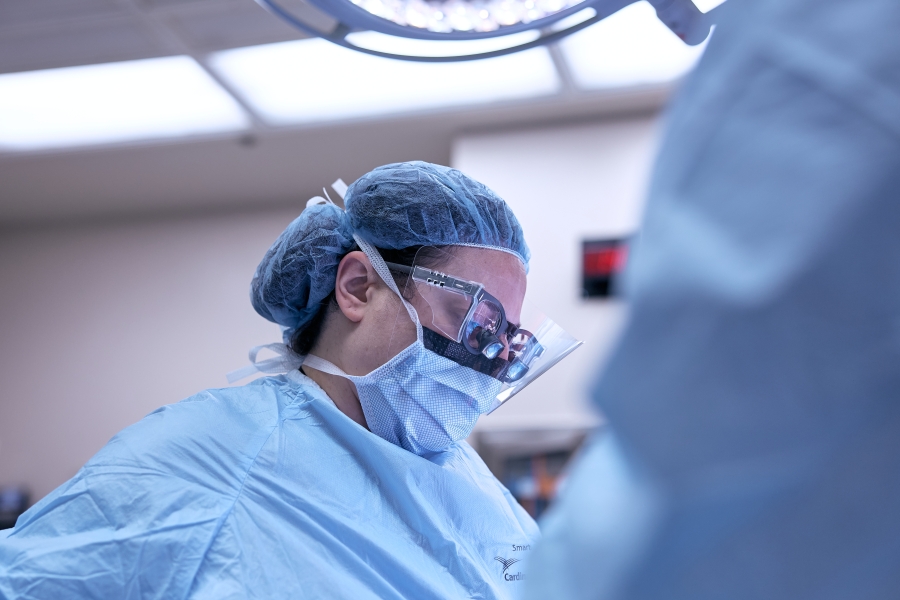Arrhythmias — abnormal heartbeats — are caused by problems with the electrical signals in the heart. When medications can't control an arrhythmia, it's often possible to reset those electrical signals with a non-invasive procedure known as electrical cardioversion.
Not all arrhythmias require treatment. But some can lead to serious health problems, including cardiac arrest (sudden stopping of heart function), heart failure and stroke. They can also cause symptoms such as:
- A fluttering sensation in the chest
- A racing or pounding heart
- Anxiety
- Chest pain or “heaviness”
- Dizziness or light-headedness
- Fainting
- Fatigue
- Shortness of breath
Many of my patients find that medication and lifestyle changes can keep their abnormal heartbeat in check. As an electrophysiologist — a cardiologist who specializes in heart rhythm problems — this route is usually the first option I turn to when working with new patients.
When medications aren't enough to control symptoms, or a patient's arrhythmia puts them at serious health risk, it's time to consider advanced arrhythmia treatments, including electrical cardioversion.
How electrical cardioversion treats arrhythmia
When I recommend electrical cardioversion to patients, I start by explaining how the heart uses electricity to keep its beat. The heart's natural pacemaker, called the sinus node, releases electrical signals. When the heart is beating normally, these signals move through the heart's upper chambers to the lower chambers, causing the heart muscles to contract and create a heartbeat.
Arrhythmias happen when that electrical system malfunctions. In some cases, the electrical signals may fire incorrectly, forming a feedback loop of abnormal signals and causing abnormal heart rhythms. These “short circuits” can cause arrhythmias like atrial fibrillation (AFib), atrial flutter, and ventricular tachycardia.
Electrical cardioversion can be an effective, minimally invasive procedure for this type of short circuit. A physician uses a very carefully controlled electric shock to interrupt the loop, resetting the electrical signals and restoring the heart to its normal rhythm.
What to expect after electrical cardioversion
Though we use the term "electric shock" to describe this treatment, patients do not feel anything. During the procedure, we use anesthesia meaning that patients are sedated and sleep through the procedure, and they will not feel a thing.
Electrical cardioversion is often an outpatient procedure, meaning most patients can go home the same day. Once the cardioversion is complete, patients typically remain in the hospital for a few hours while they recover from the anesthesia. This time also helps us ensure that they are recovering well and that their heart is maintaining a healthy rhythm.
Electrical cardioversion can often effectively reset a heart's rhythm, ending an arrhythmia cycle. The arrhythmia symptoms stop as soon as the heart returns to a normal rhythm, so the results are immediate. It can be a remarkable transformation.
However, while electrical cardioversion can end a patient’s arrhythmia cycle, it doesn’t affect the cause of the condition. It’s more like flipping a circuit breaker than repairing the wiring. Depending on your condition and the cause of your arrhythmia, you may need to take medications to help avoid developing an arrhythmia again in the future.
Rest assured that if you receive this procedure at Temple, the team will fully walk you through all of this so that you understand what actions you must take to prevent the arrhythmia from returning.
With no incision to heal from, most patients recover and return to normal activities very quickly after an electrical cardioversion procedure. Some patients may experience irritation of the skin for a couple of days, but other than that, there are no noticeable side effects. Because anesthesia can make you drowsy for a couple of hours, it's not safe to drive for 24 hours after the procedure. If you are planning an electrical cardioversion procedure, you'll need to arrange for a ride home from the hospital.
I generally prescribe a course of blood-thinning medications before and after an electrical cardioversion. Taking these drugs for four weeks helps prevent blood clots from forming.
If your arrhythmia does come back, your electrophysiologist might recommend a second cardioversion procedure. Or they may recommend a different advanced treatment option like the ones available through Temple's Arrhythmia Program.
Get expert arrhythmia care
If you have AFib or another type of arrhythmia, an experienced electrophysiologist like the experts at the Temple Heart & Vascular Institute can offer the expert diagnosis and advanced treatments you need. Request an appointment or call 800-TEMPLE-MED (800-836-7536) today.
Helpful Resources
Looking for more information?
- Learn more about Arrhythmia Diagnosis
- Meet the Arrhythmia Program Doctors & Care Team at Temple
- Blog — Is It Stress, Anxiety, or AFib?

